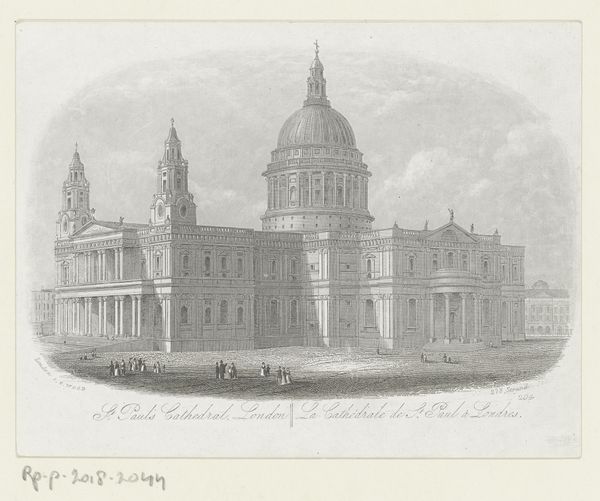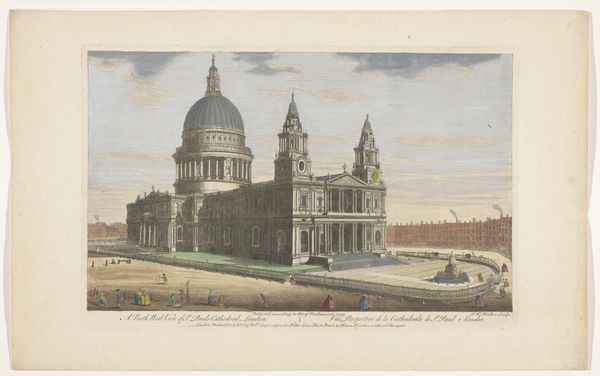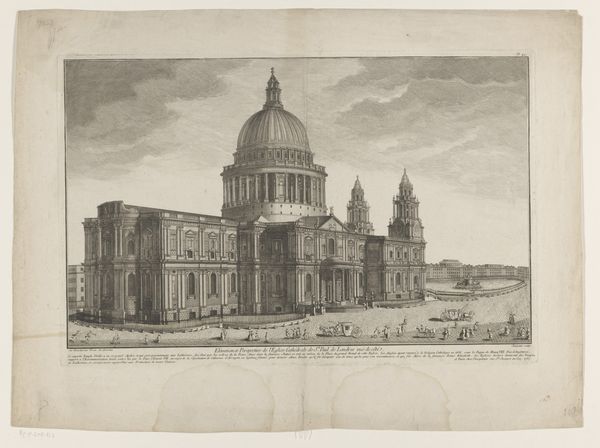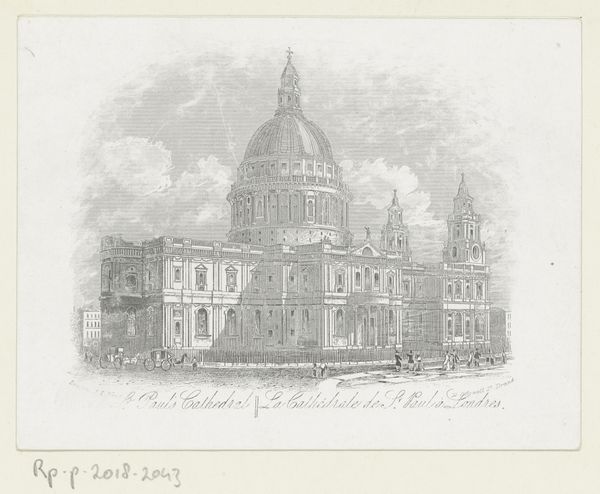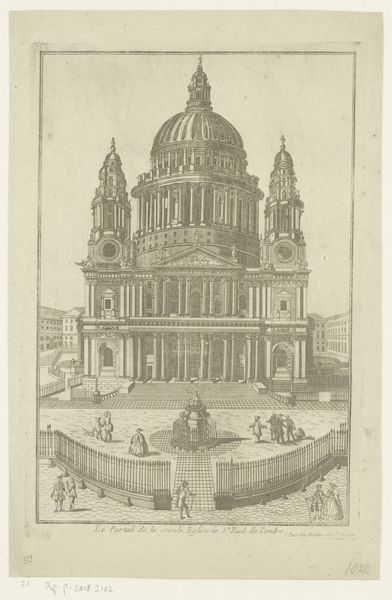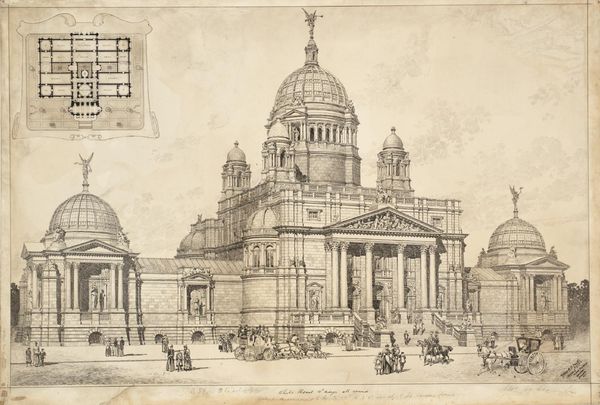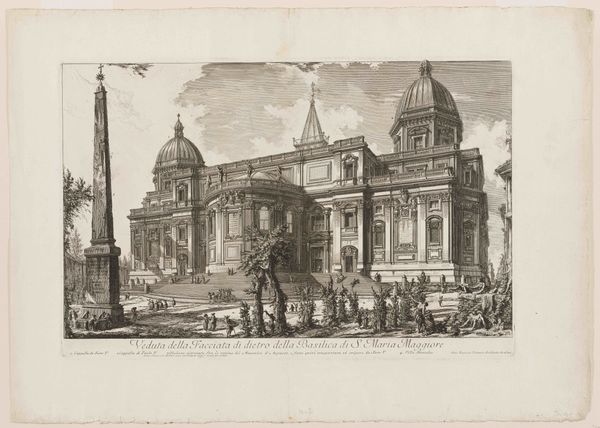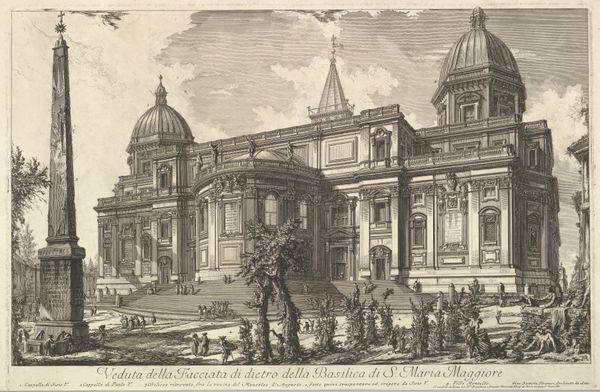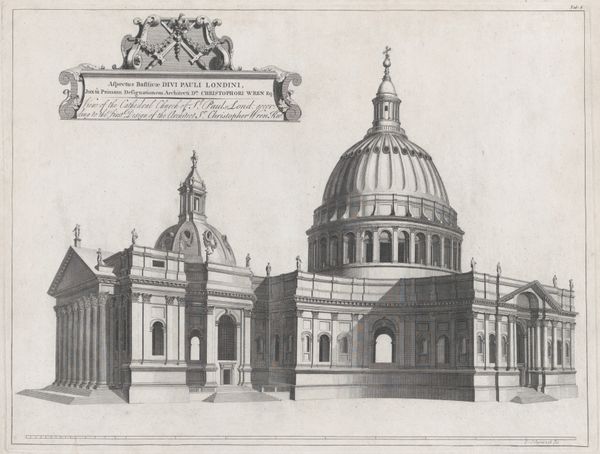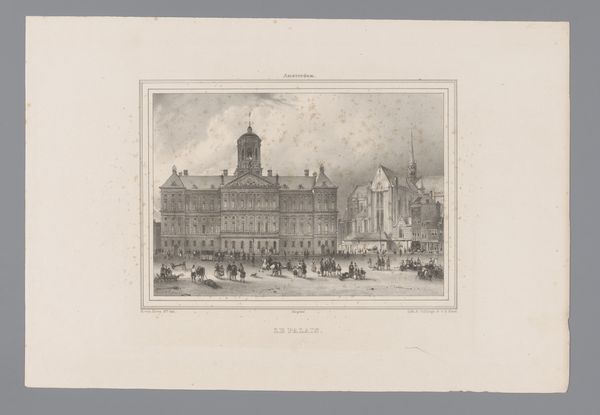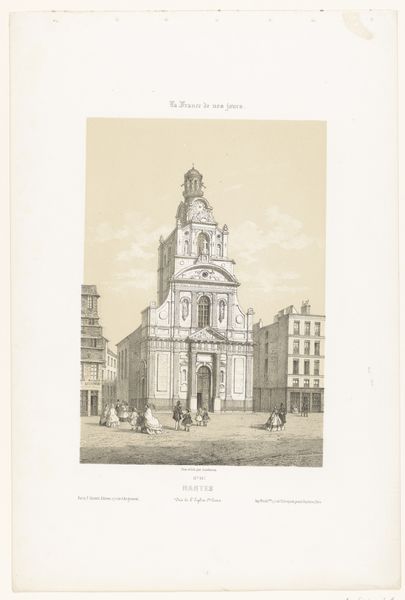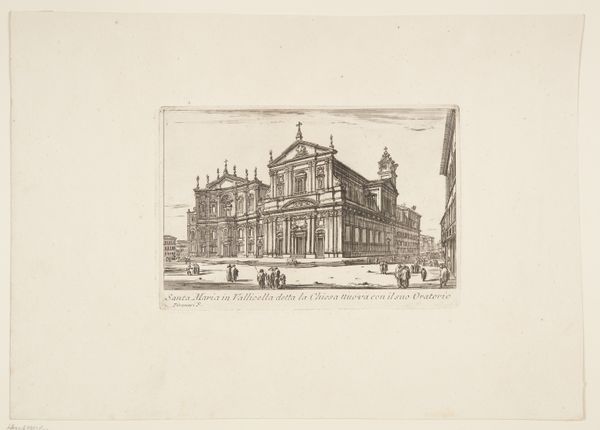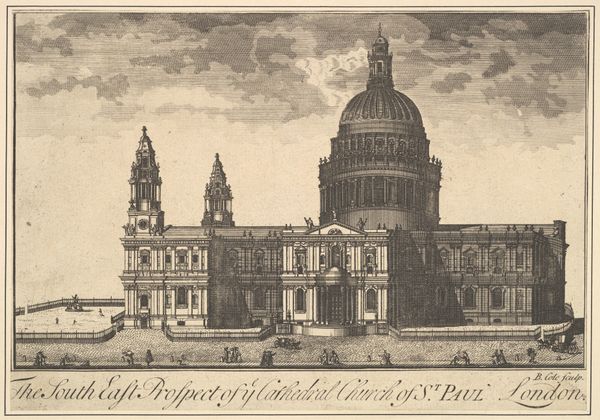
drawing, print, paper, engraving
#
drawing
# print
#
pencil sketch
#
landscape
#
paper
#
romanticism
#
cityscape
#
engraving
#
realism
Dimensions: height 140 mm, width 168 mm
Copyright: Rijks Museum: Open Domain
Curator: Here we have an engraving from 1837, "Gezicht op St Pauls Cathedral vanuit het noordwesten, te Londen," a cityscape rendering St. Paul's. It resides in the Rijksmuseum collection. Editor: The overwhelming impression is one of permanence and a certain solemnity. The sharp lines of the engraving, combined with the subject matter, create a sense of almost impenetrable monumentality. Curator: Precisely! The meticulous technique – the linear precision and controlled tonal range achieved through engraving – reinforces this idea of immutable structure and architectural prowess. Note the way the artist uses hatching and cross-hatching to define the dome's curvature. Editor: While I see your point about the architectural prowess, it's difficult for me to ignore the broader societal context of 1837, well into the Industrial Revolution, where stark class divisions were becoming increasingly fraught. This depiction of unwavering, centralized power through this massive cathedral inevitably provokes questions about access, privilege, and who benefits from such grand displays of architectural domination. It feels almost like an ideological fortress. Curator: I grant you that interpretations are myriad. However, look closely at how the structure dominates the composition – it exemplifies ideal proportions, a harmonious balance, and clear lines indicating depth and dimension, consistent with classical ideals. Note how the artist strategically uses light and shadow to highlight key architectural elements, further emphasizing its structural integrity. The scale! Editor: And yet, what’s the human cost? This imposing cathedral, standing tall amidst a rapidly changing urban landscape. Who was afforded the right to that perspective of stability when others battled widespread socio-economic changes. I think we're bound to ask: is it simply a celebration of British architectural accomplishment or also, intentionally or not, an indicator of societal disparities? Curator: I see your point, the piece does not overtly grapple with societal inequality. It excels as a masterful exercise in perspective and rendering. I leave contemplating its symbolism and social meaning for the viewers themselves. Editor: It reminds us that aesthetic choices and the narratives that arise from them—from a purely architectural appreciation, for instance—have to also respond to and represent those complexities that resonate with all people.
Comments
No comments
Be the first to comment and join the conversation on the ultimate creative platform.
